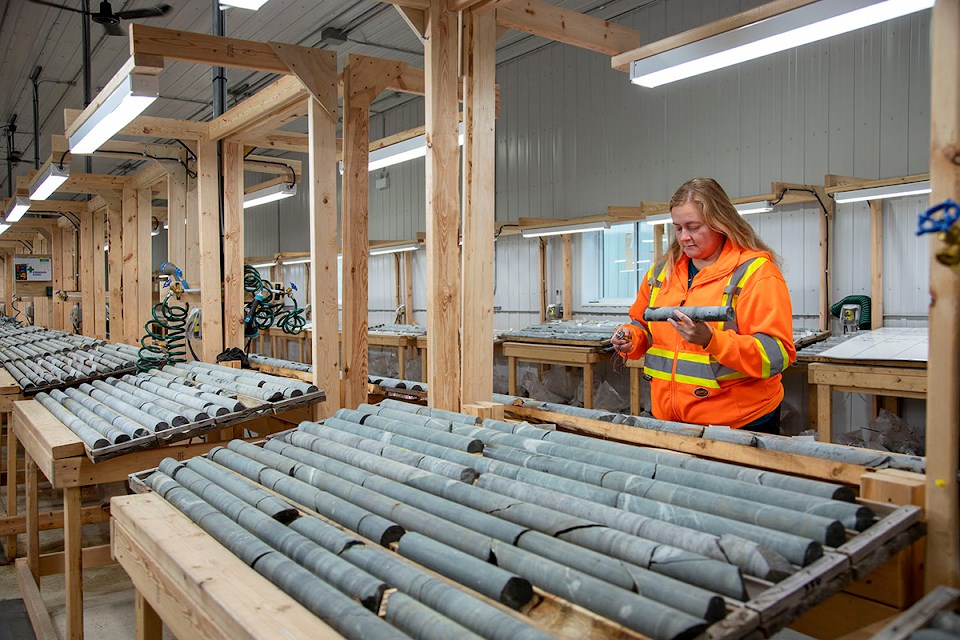DUBREUILVILLE - The trail of gold at Dubreuilville never seems to stop for Alamos Gold.
The gold company keeps drilling and discovering more high-grade gold extensions at its Island Gold Mine deposit.
Alamos posted some of the more choice high-grade drill hits in a Jan. 13 news release, pulled from the results of its recent underground and surface drilling exploration program.
The Toronto mid-tier miner has very high hopes for Island Gold and the neighbouring Magino open-pit mine, acquired last year from Argonaut Gold.
Now dubbed by Alamos as the Island Gold District, the complex being viewed as a catalyst for the company’s ambitious gold production growth plans over the next three years.
Alamos has been sizing up the potential of having its new addition, Magino, in the fold for a full year’s worth of production while it tracks toward finishing its third major mine expansion at Island Gold, which will increase gold production and mine it at a lower cost. Alamos is sinking a new shaft down to a depth of more than 1,300 metres to access new mining fronts. That project will wrap up midway through 2026.
Since acquiring Island Gold in 2017, Alamos has never been shy about spending money on exploration drilling. Of its total 2025 global exploration budget, a record $72 million, the Island Gold District will land $27 million to pick up where it left off last year in chasing more high-grade mineralization laterally across the Island Gold deposit and at depth.
So far, the combined total mineral reserves and resources at the Island Gold complex supports a 19-year mine life, but it likely won’t stop there.
The latest round of drill results will be poured into a new mineral resource estimate that comes out next month.
In a statement, Alamos president-CEO John McCluskey called Island Gold’s 2024 drilling program “one of the most successful in the history of the asset” when it comes to the magnitude of the high-grade drill intersections. He expects the upcoming resource estimate will mark the ninth consecutive year of growth in gold reserves and resources.
“Island Gold has established itself as one of the highest-grade and fastest growing deposits in the world. With the main structure open laterally and down-plunge, and significant high-grade results being intersected within emerging and yet-to-be-defined zones in proximity to the main structure, we see excellent potential for this pace of growth to continue,” said McCluskey.
Besides running the Island Gold-Magino operation, Alamos operates the Young-Davidson Mine outside Matachewan and a mine in the Sonora state of Mexico.
In its year-end report, Alamos posted a company-wide production record of 567,000 ounces mined with record revenues of US$1.3 billion and strong cash flow at $325 million. Along with expansion in Dubreuilville, Alamos made it official this week that it is starting construction this year on its Lynn Lake open-pit gold mine project in northern Manitoba. It will go into production in 2028.
These two developments, Alamos said, will be key in spurring higher gold production by 24 per cent for the next three years.
Expectations for the Island Gold District is for the annual gold target (known in industry parlance as guidance) to jump 53 per cent this year due to higher underground mining rates at Island Gold and a full year of production from Magino. By 2027, both mines are expected to produce close to 400,000 ounces a year, up 100 per cent from what was mined in the area in 2024.
A new life of mine plan for Island And Magino is due out in the middle of this year.



